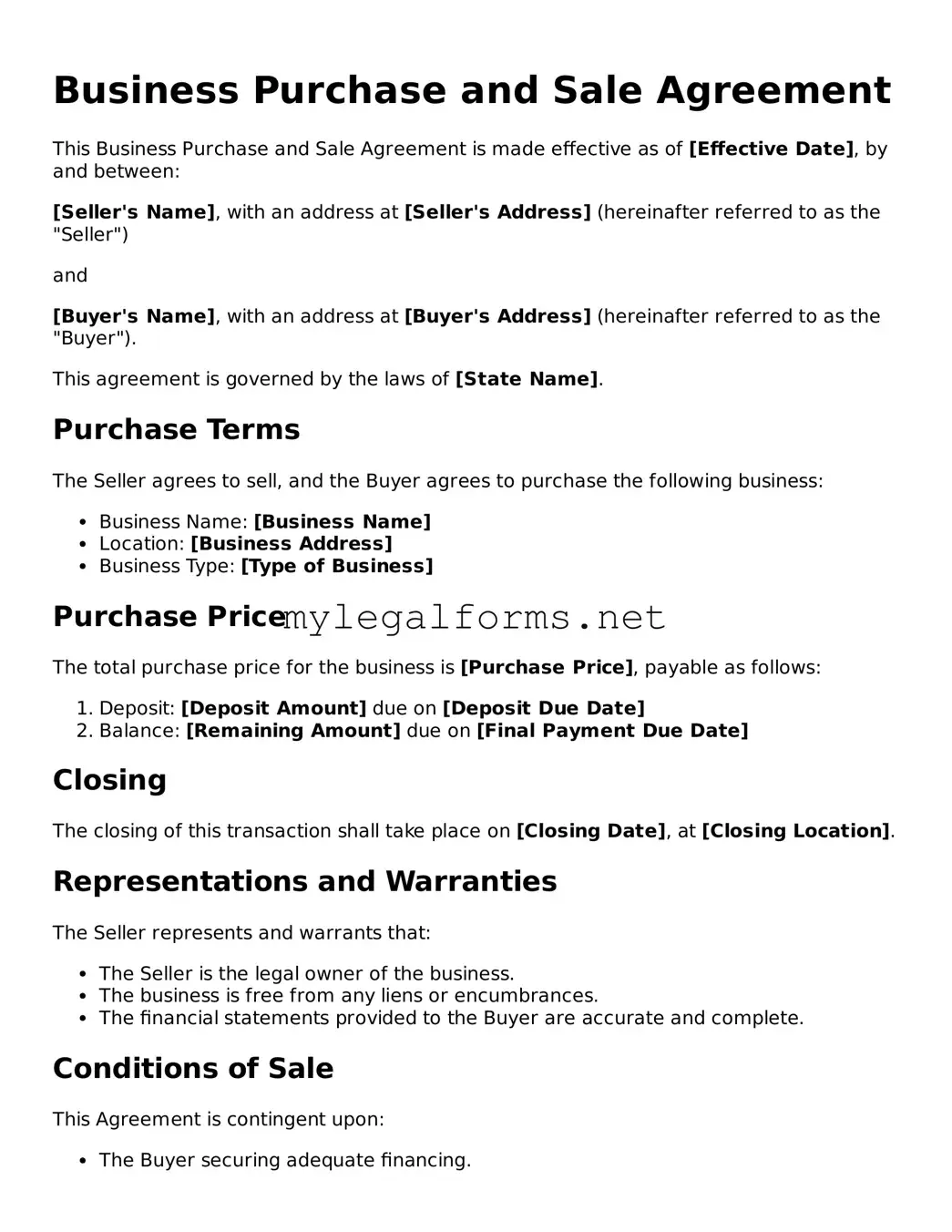Business Purchase and Sale Agreement
This Business Purchase and Sale Agreement is made effective as of [Effective Date], by and between:
[Seller's Name], with an address at [Seller's Address] (hereinafter referred to as the "Seller")
and
[Buyer's Name], with an address at [Buyer's Address] (hereinafter referred to as the "Buyer").
This agreement is governed by the laws of [State Name].
Purchase Terms
The Seller agrees to sell, and the Buyer agrees to purchase the following business:
- Business Name: [Business Name]
- Location: [Business Address]
- Business Type: [Type of Business]
Purchase Price
The total purchase price for the business is [Purchase Price], payable as follows:
- Deposit: [Deposit Amount] due on [Deposit Due Date]
- Balance: [Remaining Amount] due on [Final Payment Due Date]
Closing
The closing of this transaction shall take place on [Closing Date], at [Closing Location].
Representations and Warranties
The Seller represents and warrants that:
- The Seller is the legal owner of the business.
- The business is free from any liens or encumbrances.
- The financial statements provided to the Buyer are accurate and complete.
Conditions of Sale
This Agreement is contingent upon:
- The Buyer securing adequate financing.
- Both parties executing necessary documents for the transfer of ownership.
Governing Law
This Agreement shall be construed in accordance with the laws of [State Name].
Signatures
In witness whereof, the parties hereto have executed this Business Purchase and Sale Agreement as of the date first written above.
______________________________
[Seller's Name]
Seller
______________________________
[Buyer's Name]
Buyer
